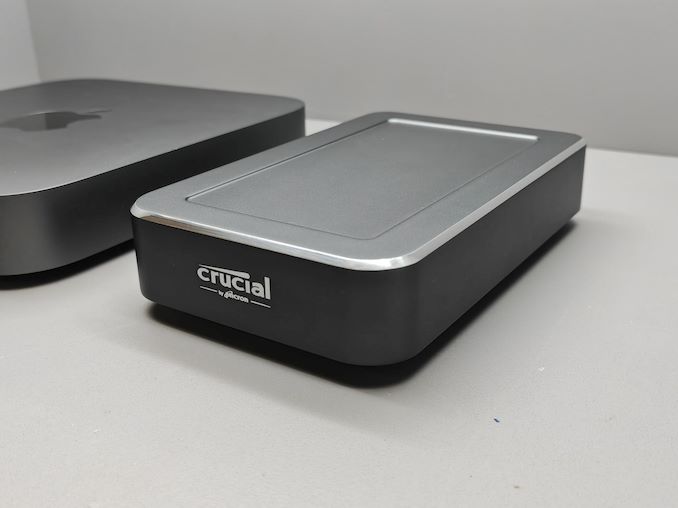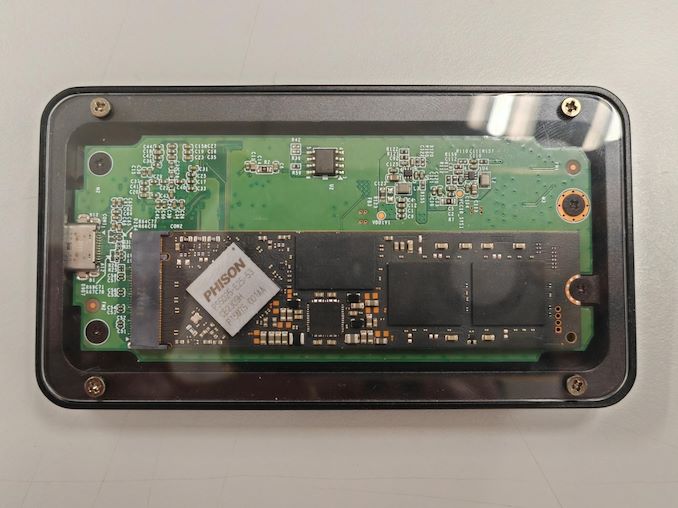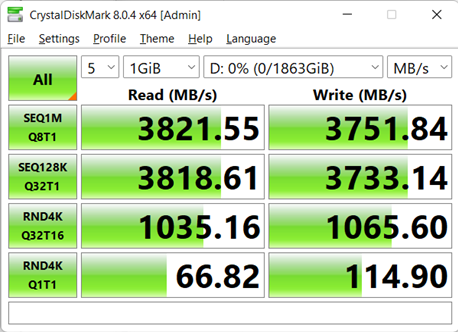
Micron's consumer brand, Crucial Memory, has been putting extra focus on the SSD market over the last few quarters. The brand was marketing entry-level QLC drives in the 2018 - 2022 time frame. Recently, emphasis has also been placed on cutting-edge SSDs - both internal (such as the Gen4 T500 and Gen5 T700) and external (such as the X10 Pro). Vertical integration, coupled with Micron being the first flash manufacturer to achieve volume production of 200+ layer 3D NAND, has been crucial to Crucial's success in these segments.
At the 2024 CES, Micron had a couple of interesting USB4 SSD technology demonstrations for its resellers / partners and invited media. These are essentially products under development (with no guarantees that they would make it to the market in their current form). Both products are bridge-based solutions using the ASMedia ASM2464PD USB4 to NVMe accessory controller. The key update over the popular ASM2364 (USB 3.2 Gen 2x2 upstream, and PCIe 3.0 x4 downstream) is the shift to a 40 Gbps USB4 upstream port along with a PCIe 4.0 x4 link downstream. The power delivery component of the Type-C specification is also implemented within the controller.
The portable SSD version has a gumstick form-factor, with the transparent casing housing a M.2 2280 SSD - a 2TB Gen4 Micron 3400 OEM drive in this case.

The drive is expected to be passively cooled, with the larger form-factor enabling a thermal performance similar to that of the X10 Pro / X9 Pro. Bridge-based solutions are the standard option for high-performance portable SSDs.

Similar configurations (bridge + DRAM-equipped M.2 SSD) such as the SanDisk Extreme PRO v2 (E81) have yielded excellent all-round performance for a wide range of workload types. We expect the same to continue in the USB4 era. That said, vendors like ADATA using the same bridge have opted for active cooling to avoid thermal throttling in their USB4 PSSD. It remains to be seen if this design will remain fanless in its final form (and if it does, thermal performance would be an interesting aspect to analyze).
The USB4 desktop SSD is a comparatively unique product. This is an actively cooled design with a small fan, and uses a U.3 SSD inside. Other vendors like OWC have tried multiple M.2 SSDs configured with software RAID in a large-sized enclosure, but this one has a single high-capacity drive (8TB in the sample being demonstrated).

Designed for stacking (without daisy-chaining support), the eSSD also requires external power. The drive can also power notebooks through the USB4 connection, which can make up for the presence of a discrete power adapter. Specifics of the power delivery will only be available when the product is officially introduced. This product could be made more attractive by having some downstream USB Type-A / Type-C ports (eSSD in a dock). That said, there are two aspects that will probably make this the performance and consistency king of USB4 SSDs - the presence of a fan, and the use of a Gen4 U.3 SSD (which is most likely an enterprise drive that advertises worst-case performance and not speeds in the SLC cache region).
The current crop of USB4 SSDs are focused on performance, and sacrifice power- and energy-efficiency. Those aspects will be addressed by native USB4 UFD controllers like Phison's U21. Silicon Motion tends to keep controllers under wraps until reference designs are ready to ship (if the introduction of the SM2320 was anything to go by). We expect external / portable SSD vendors to eventually add native UFD controller-based products to their USB4 lineup, but that seems unlikely to happen in the first half of 2024.











